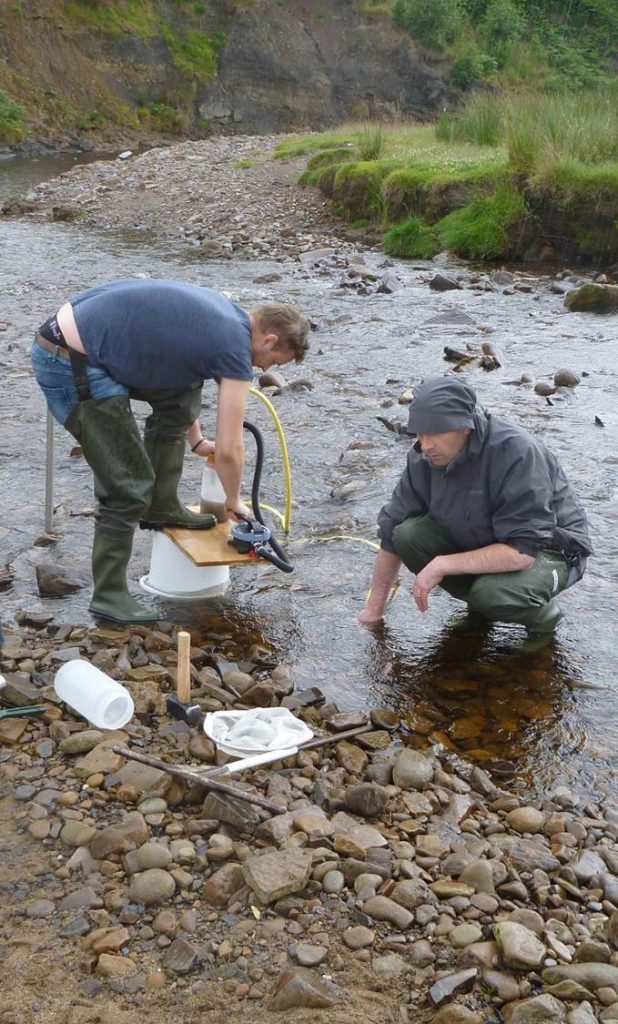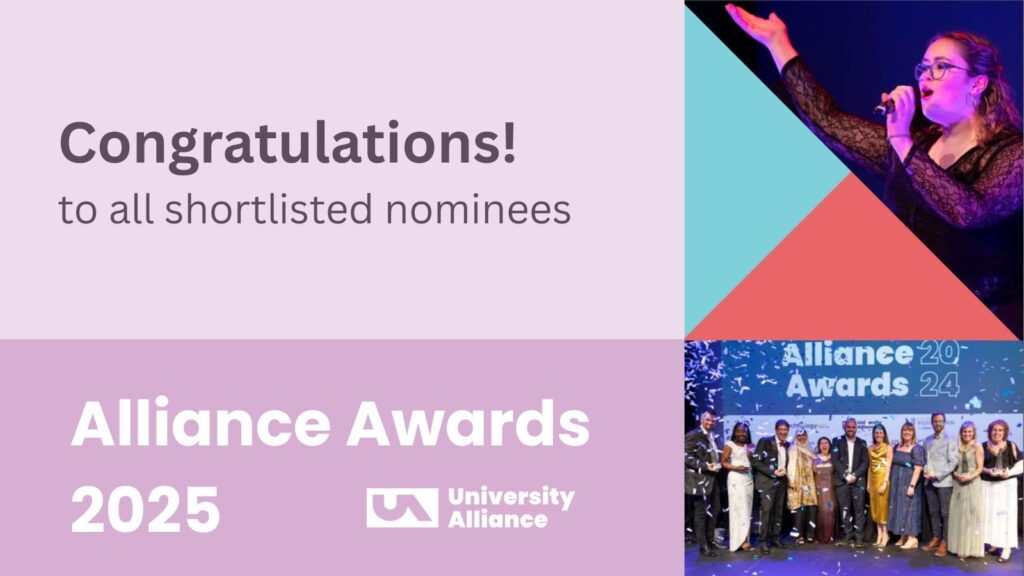 There is a thriving culture of staff-student research collaboration at Nottingham Trent University (NTU) and it forms an integral part of the institution’s strategic plan. One springboard for such activity is Scholarship Projects for Undergraduate Researchers (SPUR). The SPUR scheme has been running since 2007 to provide bursaries for undergraduates to collaborate with staff on cutting-edge research projects. 166 students have been funded to date working on 122 projects in 46 subject areas including Biosciences, Architecture, Linguistics, Social Work, Photography and Education.
There is a thriving culture of staff-student research collaboration at Nottingham Trent University (NTU) and it forms an integral part of the institution’s strategic plan. One springboard for such activity is Scholarship Projects for Undergraduate Researchers (SPUR). The SPUR scheme has been running since 2007 to provide bursaries for undergraduates to collaborate with staff on cutting-edge research projects. 166 students have been funded to date working on 122 projects in 46 subject areas including Biosciences, Architecture, Linguistics, Social Work, Photography and Education.
A significant aspect of SPUR is that it involves the student as producer, not just consumer of knowledge. In many cases SPUR students have provided the momentum, intellectual contribution and human resource needed to complete research projects. Feedback from previous supervisors indicates that the scheme has helped to foster research culture and activity internally as well as stimulating new external research collaborations and drawing external awareness to research outputs. There have been numerous staff/student publications and SPUR research has also contributed to REF output.
Several subject areas now run their own schemes using the SPUR model; more than 55 additional students have been funded this way to date. Physics is one area which has developed its own scheme to support departmental research output and nurture a new generation of researchers.
Within the physics department where I work, the Physics Undergraduate Researcher Scheme (PURS) has raised the profile of research within our undergraduate cohort, with the scheme being oversubscribed every year. We have a formal application process and interviews which give the students invaluable real-life experience of applying for jobs, and provide detailed feedback to those who were unsuccessful. The projects allow staff to develop new research ideas and students have contributed to publications and conference presentations. Over the summer months there is a noticeable buzz in the labs, noticeably even more than for term-time projects, as students are working full time, and their enthusiasm is contagious. Even though only a fraction of students actually undertake the projects, there is an appreciation of the value and enjoyment of research across the department.
SPUR is associated with high attainment: 90.1% of SPUR students who have graduated since 2008 with a first degree have attained at least a 2.1 compared to 73.0% of first degree students graduating from the general NTU population (2015/16). The benefits of schemes like SPUR however, go beyond academic prowess. The US National Survey of Student Engagement (NSSE) identifies ‘work with a faculty member on a research project’ as one of six ‘High Impact Practices’ that a student can have within their HE studies, namely a potentially ‘life-changing’ experience which facilitates collaboration, feedback, meaningful interaction between faculty and students and learning outside the classroom. NTU students have reported similar gains as well as increased confidence and improved transferable skills such as communication and time management. A former SPUR student commented: “The level of personal commitment required under the scheme is somewhat demanding and daunting. However, the end result is very gratifying as it gives students the sense of achieving something big which they would not have achieved on their own.”
Supervisors applying to SPUR must state how their research will be utilised to develop curriculum in one or more of four areas identified within the typology of research-teaching relationships developed by Mick Healey and Alan Jenkins for the Higher Education Academy (HEA): Research-led teaching; Research-oriented teaching; Research-tutored teaching; and Research-based learning.
Such linking of curriculum with research and scholarship has been identified as significant within the Teaching Excellence Framework (TEF) and ensures that the scheme impacts on the wider student community and curriculum. As well as providing great experiences for the participating students and inspiration for other students, SPUR also reinvigorates the way we teach at NTU, as it gives the supervisor a window into how students experience the research process. In some cases, supervisors have changed their curriculum in radical and exciting ways following participation in the scheme, giving the wider community of students the benefit of learning through research.
The typology is currently being utilised as a curriculum development tool to create further opportunities for staff-student research collaboration across all subject areas as part of an institutional curriculum refresh. Its use as a general framework supports a shared understanding of undergraduate research across the institution, encouraging cross-linkage of ideas and transferability of practice examples across disciplines and departments both within and outside the taught curriculum. Professor Mick Healey, one of the authors of the typology, was the keynote speaker for the NTU TILT (Trent Institute for Learning and Teaching) Annual Learning and Teaching Conference on Learning through research and inquiry in 2015, and we are continuing to build on the SPUR scheme’s success.
Dr Fairhurst presented at the UA/HEA workshop on research-informed teaching in September. He has supervised several projects through the central SPUR scheme and the PURS.




